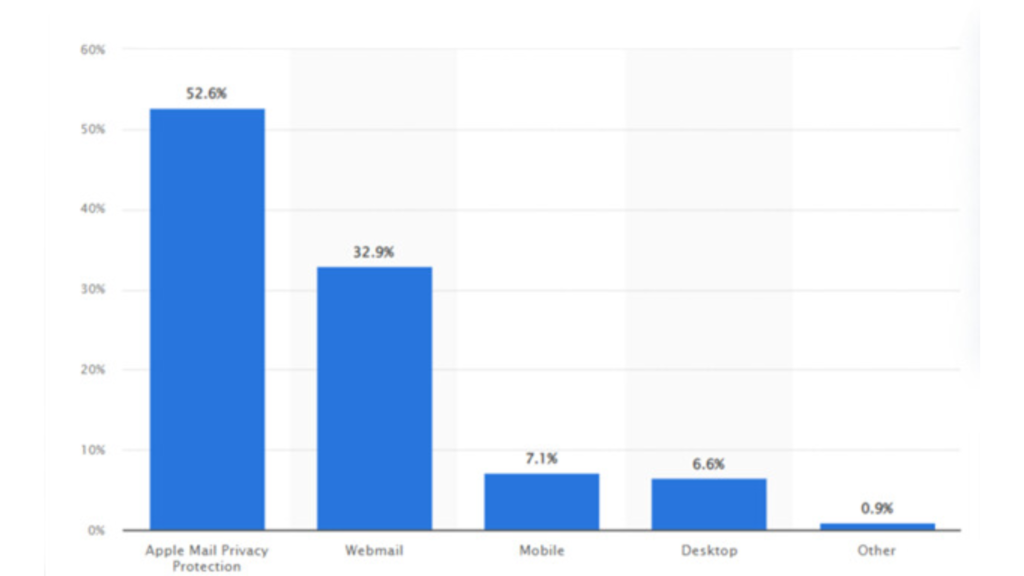Any follow-ups can be nerve-wracking especially when it comes to B2B sales. There are two questions here: what content should be put in follow-up...
Did you know that over 45% of all emails never reach their intended inbox?
That’s right, despite hitting send, your carefully crafted message might be languishing in the spam folder, unseen by your target audience. This is where email deliverability, the magic behind ensuring your emails land where they belong, comes in: the inboxes of your subscribers.
This blog post will equip you with the knowledge and strategies to improve your Email Deliverability and maximize your email marketing efforts. We’ll delve into the intricacies, explore best practices, and provide actionable tips to help your emails reach their full potential.
What is Email Deliverability?
Email deliverability refers to the process of getting your emails delivered to the intended recipient’s inbox, bypassing spam filters. Several factors influence email deliverability, including your sender reputation, email content, and list hygiene.

Strategies to Improve Email Deliverability
1.Authenticate Your Domain
A study by Experian Email Services found that implementing email authentication can improve inbox placement rates by 78%. Email authentication protocols like SPF (Sender Policy Framework), DKIM (DomainKeys Identified Mail), and DMARC (Domain-based Message Authentication, Reporting & Conformance) act as digital IDs for your emails. They verify your legitimacy as the sender, preventing email spoofing and protecting your brand reputation.
Here’s how these protocols work:
- SPF: SPF authorizes the email servers allowed to send emails on your behalf. This helps prevent unauthorized parties from mimicking your email address.
- DKIM: DKIM digitally signs your emails, adding a layer of security and ensuring they haven’t been tampered with in transit.
- DMARC: DMARC builds on SPF and DKIM by providing feedback on how recipients handle your emails. It allows you to define what happens to emails that fail authentication (quarantine or reject).

2. Warm Up Your IP Address
When you’re new to email marketing, your IP address (the unique identifier assigned to your email server) doesn’t have an established reputation with Internet Service Providers (ISPs) like Gmail or Yahoo. ISPs use sender reputation to determine whether emails are legitimate or spam. Suddenly sending a large volume of emails from a new IP can raise red flags and trigger spam filters.
Here’s how to warm up your IP address:
- Start Small: Begin by sending emails to a small group of verified contacts, gradually increasing the volume as your reputation builds.
- Segment Your List: Target highly engaged subscribers first, as positive interactions from them will improve your sender score.
- Monitor Performance: Closely track your bounce rates and spam complaints. A sudden spike could indicate a problem with your warm-up strategy.
- Use a Reputable Email Service Provider (ESP): A good ESP can help you manage your sending reputation and provide guidance on IP warming.
3. List Hygiene: Maintaining a Clean Subscriber Base
According to a Campaign Monitor study, 60% of businesses experience challenges with email deliverability due to dirty email lists.
List hygiene refers to the process of keeping your email list clean and up-to-date. This involves removing inactive subscribers, invalid email addresses, and those who haven’t engaged with your emails in a long time.

A clean email list is essential for email deliverability. Here’s why:
- Reduced Bounce Rates: Invalid or inactive email addresses lead to bounce backs, which can negatively impact your sender reputation with ISPs.
- Improved Engagement: A clean list ensures your emails reach engaged subscribers who are more likely to open and interact with your content.
- Enhanced Brand Reputation: Emails bouncing back due to invalid addresses can make your brand look unprofessional.
4. Content is King (and Queen): Crafting Engaging Emails
Compelling content is the cornerstone of successful email marketing. Here’s how to create emails that resonate with your audience and bypass spam filters:
- Focus on Value: Provide valuable content that educates, entertains, or inspires your subscribers. Align your email content with their interests and needs.
- Personalization Matters: Personalize your emails whenever possible. Use subscriber names, purchase history, or previous interactions to create a more relevant experience. Experian study revelas that personalized emails can generate 6X higher open rates compared to generic emails.
- Segmentation is Key: Segment your email list based on demographics, interests, or behavior. This allows you to send targeted emails that resonate with specific subscriber segments.
- Avoid Spammy Tactics: Refrain from excessive use of ALL CAPS, exclamation points, or irrelevant keywords. Focus on clear, concise communication.
5. Permission is Power: Building a Strong Opt-in Process
Building a strong opt-in process ensures you only send emails to users who have explicitly given you permission. This can be achieved through website signup forms, lead magnets, or double opt-in confirmation emails. Having confirmed consent protects you from spam complaints and maintains a positive sender reputation with ISPs.
Here’s why a strong opt-in process matters:
- Reduced Spam Complaints: When users explicitly sign up for your emails, they’re less likely to mark them as spam.
- Improved Engagement: Subscribers who opt-in are more receptive to your messages, leading to higher engagement rates.
- Legal Compliance: Permission-based email marketing is essential for complying with anti-spam regulations like CAN-SPAM (Controlling the Assault of Non-Solicited Pornography and Marketing Act) in the US.
Different Opt-in Methods:
- Signup forms on your website: Offer clear and concise opt-in forms with a single opt-in or double opt-in confirmation process.
- Lead magnets: Provide valuable content like ebooks, white papers, or webinars in exchange for email addresses.
- Offline signups: Capture email addresses at events or through in-store promotions, ensuring subscribers understand they’ll receive emails.
6. Design Matters: Optimizing Your Emails for Mobile
With the majority of emails being opened on mobile devices, ensuring your emails are mobile-friendly is crucial.

Source – Statista
Use responsive design techniques to ensure your emails render correctly across different screen sizes and devices. Here’s how:
- Responsive Design: Use responsive email design techniques to ensure your emails automatically adjust to different screen sizes and devices.
- Single-Column Layout: Opt for a single-column layout for optimal readability on mobile devices.
- Concise Content: Keep your email content concise and avoid lengthy paragraphs that require scrolling.
- Large Buttons: Use large, clear call-to-action (CTA) buttons that are easy to tap on a mobile screen.
- Preheader Text Optimization: The preheader text displayed next to your subject line in some email clients plays a crucial role on mobile. Use it to provide a clear and compelling summary of your email content.
7. Frequency is Key: Finding the Right Sending Schedule
Bombarding your audience with emails can lead to unsubscribes and complaints, negatively impacting deliverability. Here’s how to find the right sending frequency:
- Consider Audience Preferences: Research and understand your audience’s email preferences. Some might prefer daily updates, while others might prefer weekly or monthly emails.
- Segment Your Audience: Segment your list and tailor sending frequency based on subscriber interests and engagement levels.
- Monitor Engagement Metrics: Track your email analytics and adjust your sending frequency based on open rates, click-through rates, and unsubscribe rates.
- Start Low, Increase Gradually: Begin with a lower sending frequency and gradually increase it as you gain insights into your audience’s preferences.
8. Analytics Advantage: Monitoring and Analyzing Performance
Don’t send emails into the void! Data is your friend in email marketing. Analyze your data to identify areas for improvement and refine your email strategy. Understanding what resonates with your audience will help you craft more effective emails in the future.
By tracking key email marketing metrics, you can gain valuable insights into your campaign performance and identify areas for improvement. Here are some metrics to monitor:
- Open Rates: The percentage of recipients who open your email.
- Click-Through Rates (CTRs): The percentage of recipients who click on a link within your email.
- Bounce Rates: The percentage of emails that are undeliverable due to invalid addresses or full inboxes.
- Unsubscribe Rates: The percentage of recipients who opt-out of your email list.
- Complaint Rates: The percentage of recipients who mark your email as spam.
Conclusion
By following these strategies, you can significantly improve your email deliverability and ensure your messages reach the right inboxes. Remember, email deliverability is an ongoing process. Continuously monitor your performance, adapt your tactics, and prioritize building trust with your audience. With a focus on deliverability, you can unlock the true power of email marketing and connect with your audience in a meaningful way.
Ready to take your email marketing to the next level and unlock the true power of your inbox? Contact DealsInsight today for a free consultation and discover how we can help you turn subscribers into loyal customers.




